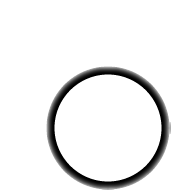What is Open Hardware? Good question, its something that's only starting to come about so not surpringly it's still a little murky.
Open (source) hardware is a licensing agreement for electromechanical projects. That is to say, electronics and robotics and other mechanical projects are open hardware if they are documented and published under an open hardware license.
So what is an open hardware license?
An open hardware license is basically an agreement by the author(s) of the work that allows other people to use that work for free, without paying royalties, licensing fees, etc. as long as certain constraints are followed. The most common constraints are "attribution requirements," for example requiring anybody who uses the work to place the name of the original author(s) prominentlyon the final project. Another common constraint is "share-alike" that means that any derivative work must be released under a similar license. Open source software licenses are pretty well defined at this point and a whole list of them is available for perusal at the Open Source Initiative website
Many people use open source software (OSS) licenses such as "Creative Commons", "GPL" (GNU Public License), "BSD" or "MIT" and other similar OSI approved licenses.
There may be a benefit to having a seperate/unique license for hardware because hardware can be patented (unlike software) there has recently been calls for open hardware licenses
Software is distributed as a text file, often a compiled binary' is included as well. It has been well established that software code is copyrightable, so OSS license often rely on the rights and capabilities of copyright. Hardware, on the other hand, and especially electronics hardware, has multiple layers that may be licensed.
I'm not a lawyer, so of course you should not depend on this list for any legal needs. If you are an IP lawyer, and you find a mistake, let me know so I can repair it!
This layer has to do with the mechanical description of the project. For example, enclosure design, or parts to be machined or cut. This layer is often described and distributed as CAD files (autocad, corel draw, sketchup, etc). These files are drawings and can be copyrighted however the content may be patentable. The best publishing format is a well known vector-based format such as DXF, AI, PDF, DWG, etc. Included should be any notes, materials, units, and dimensions.
Schematics are the symbolic representation of an electronic project, showing how to connect parts together. While the image itself is copyrightable, the content is not (it may be patentable though). Schematics should include parts lists (including IC manufacturers and their part numbers as well as distributors if possible). They should be distributed in a easily readable graphics format such as BMP, PNG, GIF, JPG, PDF, etc. This is in addition to possibly distributing the schematic in the (proprietary) format used by the schematic capture program.
Parts lists should be distributed as an attached text file if the list is more than a dozen parts. Alternately, they can be included as text inside the schematic image.
Printed circuit board (PCB) layouts are the concrete representation of an electronic project, showing how to connect parts together. These files are often used to create physical circuit boards for soldering components. They are often derived from a schematic, taking into account any special layout requirements for the components. (For example, trace width and lenth, via placements, part placements, etc). Note that a schematic can always be "reverse-engineered" back to a schematic.
The layout images are copyrightable but the content is not. Layouts should also come with a parts list (including IC manufacturers and their part numbers & packages as well as distributors if possible) Layouts are best distributed in vector artwork format, preferrably Gerber/Excellon (which is currently the standard format for manufacturing) but PDF is also not uncommon. This is in addition to possibly distributing the layout in the (proprietary) format used by the layout capture program.
Parts lists should be distributed as an attached text file if the list is more than a dozen parts. Alternately, they can be included as text inside the layout (in the overlay layer) but this is not preferrable
It is preferrable to have a parts list (as mentioned in the schematic/layout sections) and use parts that don't have constraints on the datasheets. I.e. they should be freely available without signing NDAs
This is text that is describes a chip design. It is essentially "software for silicon", by programming an FPGA with this code one can create customized chips. The code itself it copyrightable (and possible patentable?)
This is software that is burned into memory which defines the function of a microprocessor or microcontrollers. It is copyrightable but not patentable as it is basically software.
Hardware has advanced to the point where embedded computers are commonplace. At this point, it is feasable to run software on top of the firmware
